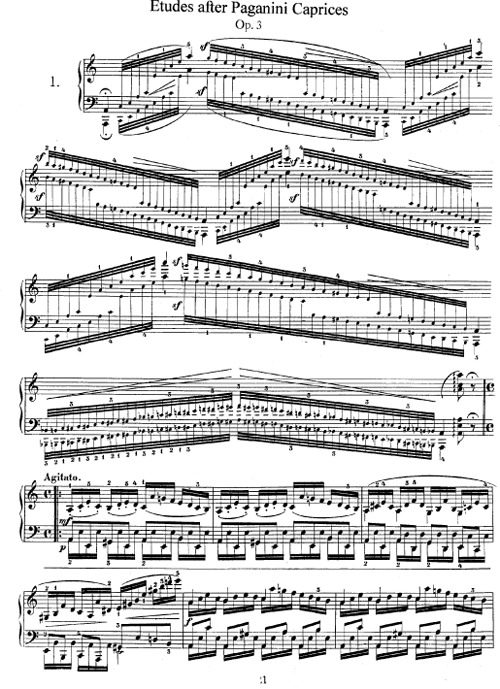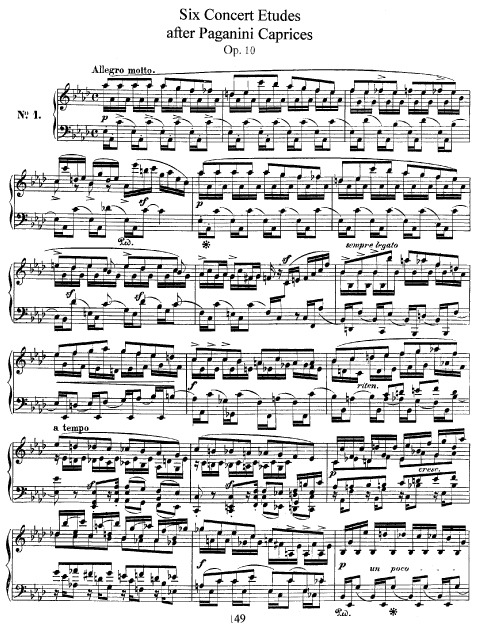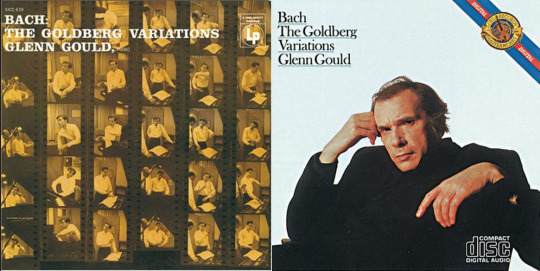Link
0 notes
Photo




Sheet music for Paganini’s 24 Caprices (and Schumann derivations).
0 notes
Link
On first listen, this record irritated me so much I nearly threw it into:
the ocean.
the sea.
a river.
a stream.
a swamp.
the creek.
a pond.
a lake.
a loch.
a lagoon.
an estuary.
the drink.
a reservoir.
a fjord.
a gulf.
a gully.
a marsh.
a bay.
a cove.
a canal.
a pool.
an arroyo.
a brook.
a delta.
But now I like it. It’s strange how so many of the works I feel drawn to were conceived of as exercises. Paganini composed this suite, so the liner notes inform me, so that each ‘caprice’ was played in a different key. It would also require the instrumentalist to use specific skills. So it was designed to showcase virtuosity. Certainly Perlman is a virtuoso, but since I know nothing about the violin - I can only really guess as to how difficult it must be to play something, and therefore which echelon of virtuosity to be astonished by.
So I’m often just as impressed by scales as I am by ‘double-stop trills’ which sounds like a skateboarding trick. Suites like this, that functioned originally as study aids or public displays of skill, are neither to me, because of my ignorance. I appreciate it, not because I have absorbed modernisms lessons of universality or the democracy of aesthetics (because I haven't) but because I am ignorant. So that’s good then!
0 notes
Link
I bought a 4 LP box-set of Bach’s Complete Cantata works only to realize that it was merely Volume 5 of an 8 box-set series. Oh well. These are difficult works to engage with, the sheer quantity, the sonic weight and grandosity, as well as the relentlessness of faith.
I have picked out a first favorite, however, Siehe, Ich stehe vor der Tür (BWV 61), The title translates as See I stand at the door, and the piece illustrates a scene where Jesus begs entry into what is revealed to be the human heart. There is a wonderful bit of musical onamatopoeia here when Jesus knocks (or klopfes) at the door/heart.
Baritone Peter Harvey articulates (modulates?) the klopfing nicely here as a dwindling set of gentle raps. Those a familiar might give before opening the door, being most welcome inside..
0 notes
Photo

Mstislav Rostropovich performing Bach’s Second Suite for Cello at the Berlin Wall November 1989.
2 notes
·
View notes
Text
The Well-Tempered Ear
Enjoying this blog by Jacob Stockinger - very informative and aproachable even for nitwits like me.
https://welltempered.wordpress.com/
0 notes
Photo

Martha Argerich - Bach Toccata BWV 911 - Partita BWV 826 - Englische Suite No.2 BWV 807
I scored this lovely little LP at the East Van record swap for 1 buck. It features a trio of Bach works selected from several disparate programs from throughout his ouevre, performed by Argentinean superstar pianist Martha Argerich. I don’t know how much more I can write about this record however, to be honest, because I am exhausted from having to laboriously type out the opus numbers of the works for this post.
Seriously it was like transcribing a bunch of postal codes and license plate numbers. Is it necessary to always cite the opus number? Couldn’t these geniuses think of snappier titles than Sonata Number 13 in E-flat Major? Tthat one’s by Beethoven but you catch my drift.
I’m being facetious, but as a person with severe innumeracy I am finding the titling/cataloging practices of classical music to be daunting.
Anyways, the record sounds NICE.
#marthaargerich#bach#toccata#toccatabwv911#partita#partitabwv826#englischesuiteno2bwv807#piano#solopiano
0 notes
Photo

Harpsichord, fuck yeah!
I was only familiar with this instrument from it’s comedic turn in Milos Forman’s Amadeus (1984) but apparently it was the standard keyboarded instrument before the Hammerklavier (ye olde german for piano) started phasing it out in the 18th century.
Apparently because of its lack of dynamic range it annoys people, but it reminds me of noodly guitar solo tapping à la Yngwie Malmsteen mixed with the 8-bit super Nintendo music which soundtracked most of my developmental years.
I’m told that a harpsichord/guitar comparison is fitting, as it’s mechanism actually plucks the strings, rather than ‘hammers’ them as it does inside a piano. Listen to Trevor Pinnock wail on this Goldberg Variation like some kind of harpsi-maniac lighting up the scene in 16th century Saxony.
1 note
·
View note
Link
One thing that has enabled this delve into classical music is that liner notes are full of referrals. The composers as well as performers always seem to have strong opinions regarding one another. In interviews and liner notes, Gould repeats his admiration of the Ukrainian pianist Sviatoslav Richter (it was returned, with severe reservations). I took his recommendation and watched Bruno Monsaingeon’s ‘The Enigma’ documentary about Richter. I still don’t know anything about piano or Chopin but reticent this dude was not. Bewildering intensity and articulation.
Although he claimed to eschew showmanship - he also confides in the doc that he would always count to 30 before playing anything on stage in order to build tension, and he is a joy to watch not only for his grimaces and fluttering fingering but the way many of his performances are seemingly conducted by his wildly flapping comb-over.
0 notes
Photo

Joke of the Day: J.S. Bach is depicted sitting in a ‘French Suite’ on the cover of Glenn Gould’s 1973 recording of ‘The French Suites’ (Vol.1).
These ‘suites’ (an ordered set of songs) are widely accepted to be French only in name. Nobody really knows why they are called that, even on the internet! They don’t have any inherently French qualities, apparently, but the name stuck so that’s that.
The cover art was done by a guy named Clifford Condak, but I like to think it was Gould’s idea, and that he thought it was really funny.
#glenngould#gould#solopiano#gouldpiano#glenngouldbach#glenngouldthefrenchsuites#bachthefrenchsuites#classicalmusicjokes#cliffordcondak#jsbach#jsbachthefrenchsuites#bachfrenchsuites#columbiarecords#classicalrecords#classicalmusicfordummies#canadianhumour
0 notes
Photo

As far as I can tell, Glenn Gould’s recording of Bach’s Goldberg Variations is considered the top classical album of all time. It isn’t hard to find and it sounds great. He recorded the suite in 1955 at age 22 and then again as an old fella in 1981. No one seems to know why he recorded it again but I’m glad he did. Listening to the two records back to back, all I can discern is that the early one is faster, with possibly a bit more ornament. I honestly prefer the ‘81, the recording is better and I’m in no rush. As a novice I like to hear Bach a bit slower, with the musical phrases enunciated. You can also hear a lot more of Gould’s peculiar grunting on the later version, which I find endearing.
The guy at the empty record store where I bought these said that Bach constructed music like a bricklayer who, given just 4 or 5 bricks, could build a cathedral.
I also like the ‘81 because of Gould’s reclining mafioso look on the cover.
#glenngould#gouldgoldbergvariations#glenngouldbach#jsbach#bach#goldbergvariations#glenngouldgoldbergvariations#classicalfordummies
2 notes
·
View notes
Text
What do you like?
I asked two acquaintances; a singer and a hi-fi salesman about what kinds of Classical music I should start with. They both responded by asking ‘What do you like?’ I didn’t know what I liked (it was why I was asking). I lied and said Bach.
“I like Bach” I lied/said.
The singer told me Bach was from the Baroque era, the salesman told me Bach was a teacher and therefore many of his works seem like exercises, and some of them actually are exercises. I bought a Bach record. Bach is fucking good.
0 notes
